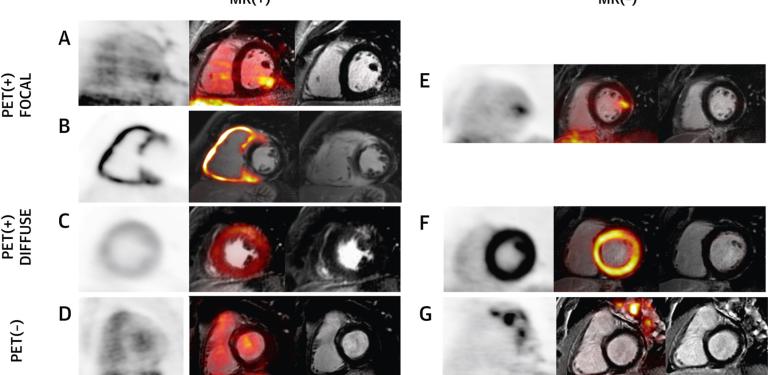Hybrid Magnetic Resonance Positron Emission Tomography Is Associated With Cardiac-Related Outcomes in Cardiac Sarcoidosis.
Title
Imaging with enhanced magnetic resonance (MR) and (18F-FDG) PET allows complementary assessment of myocardial injury and disease activity and has shown promise for improved characterization of active cardiac sarcoidosis (CS) based on the combined positive imaging outcome, MR(+)PET(+).
JACC: Cardiovascular Imaging
Available online 31 January 2024
Objectives
This study aims to evaluate qualitative and quantitative assessments of hybrid MR/PET imaging in CS and to evaluate its association with cardiac-related outcomes.
Results
Patients designated MR(+)PET(+) had increased odds of meeting the primary clinical endpoint compared to those with all other imaging classifications, which was higher than the odds based on MR or PET alone. A parameter, TNMRmax, achieved an area under the receiver-operating characteristic curve of 0.90 for separating MR(+)PET(+) from non-MR(+)PET(+) and 0.77 for separating those reaching the clinical endpoint from those not reaching the clinical endpoint.
Conclusions
Hybrid MR/PET image–based classification of CS was statistically associated with clinical outcomes in CS. TNMRmax had modest sensitivity and specificity for quantifying the imaging-based classification MR(+)PET(+) and was associated with outcomes. Use of combined MR and PET image–based classification may have use in prognostication and treatment management in CS.
View the full Abstract here.
